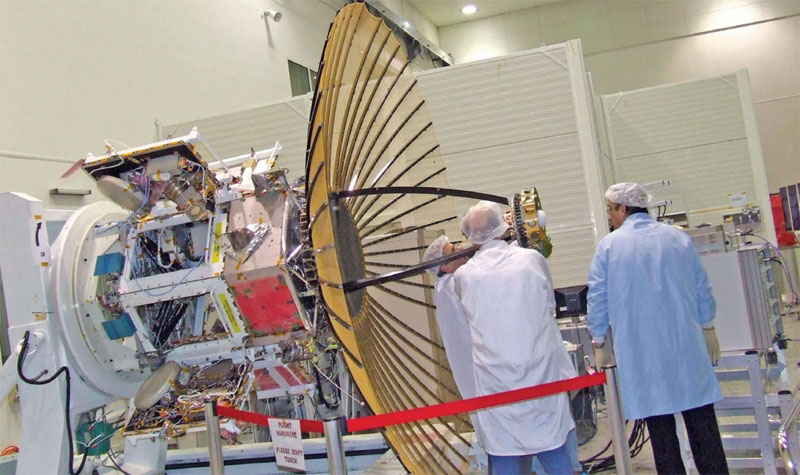Know All
Mohammad Asif Khan
India has seen a significant rise in the deployment of surveillance technologies over the years, from traditional CCTV cameras to sophisticated artificial intelligence (AI) enabled systems and drones. These technologies are integrated into extensive surveillance networks across Indian cities.
The Indian Army has deployed 140 AI-based surveillance systems, encompassing high-resolution cameras, sensors, unmanned aerial vehicle (UAV) feed, and radar feeds. These inputs are processed and analysed using AI technology to detect border intrusions and classify targets. The Army also aims to become a technologically advanced, highly effective and nimble force prepared for future challenges. To achieve this, it has started Project Sanjay, which focuses on developing the Army’s Battlefield Surveillance System (BSS).

DRDO’s RISAT
Battlefield Surveillance System
The BSS is a key part of the Indian Army’s modernisation under Project Sanjay. It is designed to improve situational awareness, decision-making and operational effectiveness on the battlefield. The BSS provides real-time surveillance and intelligence across various terrains, including plains, mountains and deserts, and is used at different levels from tactical units to divisional headquarters.
The system integrates thousands of sensors, such as radars, acoustic sensors and thermal imagers, which detect and track movements, troop concentrations and enemy activities. By combining data from multiple sources, the BSS offers a comprehensive view of the battlefield. It processes this data in real-time, giving commanders up-to-date information on friendly forces, enemy movements and critical infrastructure, helping them to make quick, informed decisions and plan operations effectively.
The BSS works in conjunction with the Artillery Combat Command and Control System (ACCCS), linking surveillance data to artillery units. This connection enhances the precision and efficiency of target acquisition and engagement, reducing collateral damage. However, maintaining sensor reliability in extreme conditions such as high altitudes and extreme temperatures remains a challenge, with ongoing efforts to improve sensor resolution, range, and interoperability.
Multi-Domain Sensing System HADES
The Multi-Domain Sensing System (MDSS) HADES programme is a crucial initiative by the Indian Army to boost its ISR capabilities, aiming to address emerging near-peer threats effectively. HADES incorporates advanced signal intelligence (SIGINT) capabilities, intercepting and analysing enemy communications, including monitoring radio signals, electronic transmissions and other forms of communication to provide crucial insights into adversary activities.
Additionally, HADES employs synthetic aperture radar/ moving target indicator (SAR/MTI) technology, offering high-resolution imagery and the ability to detect moving targets on the ground. This is essential for tracking enemy movements, identifying potential threats and assessing terrain conditions. Beyond these capabilities, HADES enhances situational awareness and decision-making for Indian forces by providing commanders with real-time information, enabling swift and effective responses. The system operates on higher-altitude, longer-endurance manned aircraft, allowing ISR missions to be conducted without risking pilots in hostile environments.
ATHENA-R/S
The army Theatre Level High Altitude Expeditionary Next Airborne ISR Radar/Signals Intelligence (ATHENA-R/S) programme serves as an interim solution until HADES becomes fully operational, bridgin
Subscribe To Force
Fuel Fearless Journalism with Your Yearly Subscription
SUBSCRIBE NOW
We don’t tell you how to do your job…
But we put the environment in which you do your job in perspective, so that when you step out you do so with the complete picture.








